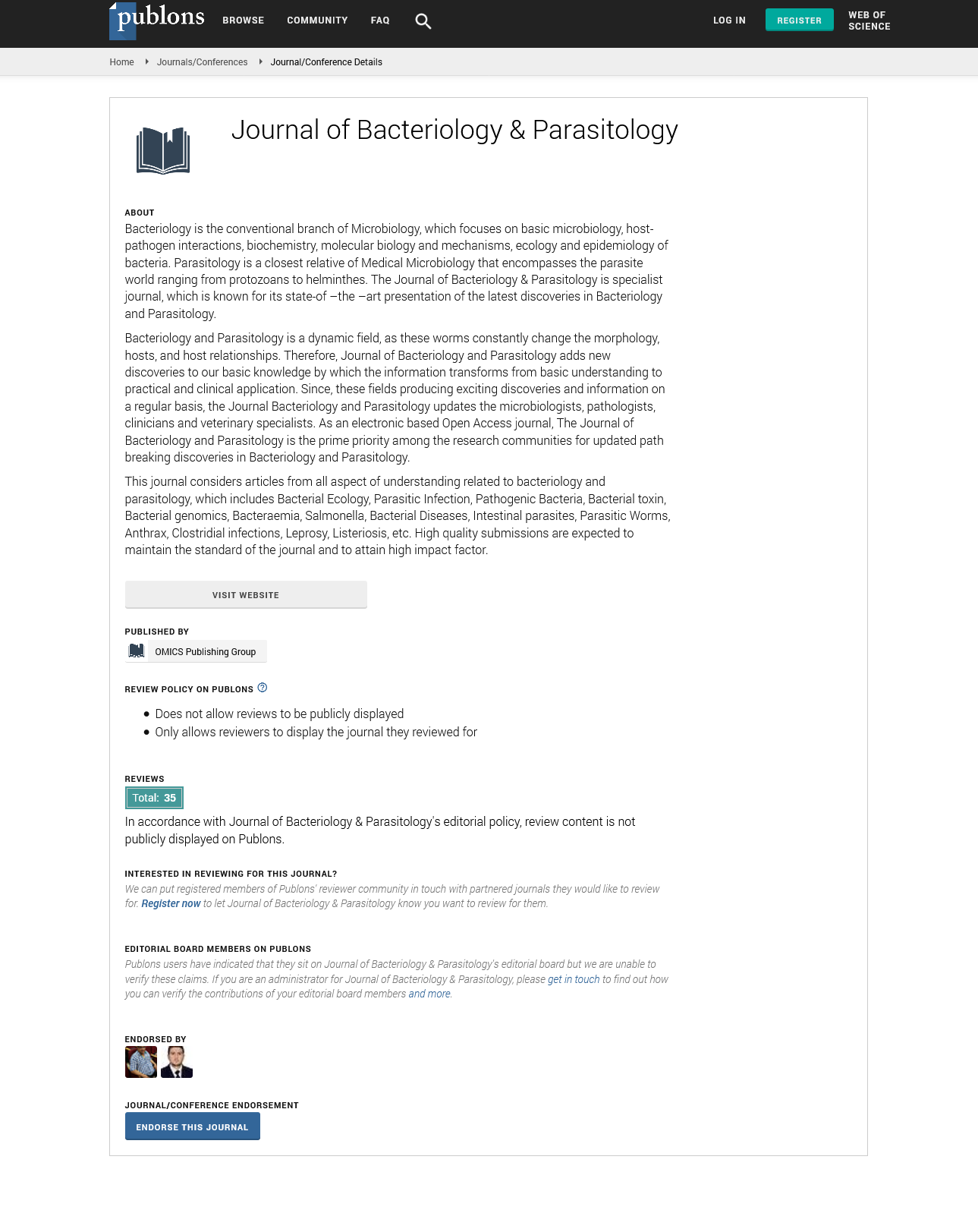Indexed In
- Open J Gate
- Genamics JournalSeek
- Academic Keys
- JournalTOCs
- ResearchBible
- Ulrich's Periodicals Directory
- Access to Global Online Research in Agriculture (AGORA)
- Electronic Journals Library
- RefSeek
- Hamdard University
- EBSCO A-Z
- OCLC- WorldCat
- SWB online catalog
- Virtual Library of Biology (vifabio)
- Publons
- MIAR
- Geneva Foundation for Medical Education and Research
- Euro Pub
- Google Scholar
Useful Links
Share This Page
Journal Flyer

Open Access Journals
- Agri and Aquaculture
- Biochemistry
- Bioinformatics & Systems Biology
- Business & Management
- Chemistry
- Clinical Sciences
- Engineering
- Food & Nutrition
- General Science
- Genetics & Molecular Biology
- Immunology & Microbiology
- Medical Sciences
- Neuroscience & Psychology
- Nursing & Health Care
- Pharmaceutical Sciences
Molecular detection of blaIMP and blaVIM type metallo-ò-lactamase producing Enterobacteriaceae from different clinical isolates
7th International Conference on Bacteriology and Infectious Diseases
June 04-05, 2018 Osaka, Japan
Pankaj Chaudhary, Asmita Khaniya, Santoshi Sharma, Soniya Sharma and Laxmi Gurung
National Public Health Laboratory, Nepal
Nobel College, Nepal
Posters & Accepted Abstracts: J Bacteriol Parasitol
Abstract:
Metallo-β-Lactamase (MBL) producing Enterobacteriaceae or Carbapenemase producing Enterobacteriaceae (CRE) is emerging as a great problem worldwide including Nepal, which is characterized by its ability to hydrolyze most of the β-lactam antibiotic including carbapenems. Isolates belonging to family Enterobacteriaceae isolated from different clinical specimen received in Bacteriology Section, Sukraraj Tropical and Infectious Disease Hospital, Teku, were included in the study. The main goal of our study was to detect clinically important genome blaIMP and blaVIM from different clinical isolates. 514 clinical specimens were processed within the study duration with 98 (19.06%) specimens showing bacterial growth. The respected isolates were screened for MBL production by the combined disc method using Imipenem, Imipenem+EDTA (Ethylenediaminetetraacetic acid) and Meropenem and Meropenem+EDTA. Out of 98 isolates 26 (26.53%) were found to be MBL producer which accounted for 20-Escherichia coli, 4-Klebsiella pneumoniae and 2-Klebsiella oxytoca, respectively. All MBL positive screened organisms were subjected for the genotypic detection of blaIMP and blaVIM gene following the DNA extraction through alkaline lysis method and PCR optimization. 5 isolates (19.23%) were found to possess IMP gene where 4 were Escherichia coli and 1 was Klebsiella oxytoca and another 5 isolates (19.23%) were found to possess VIM gene where 4 were Escherichia coli and 1 was Klebsiella pneumoniae. MBL producing Enterobacteriaceae has been frequently isolated in hospital setting and has accounted for major public health problems so related agencies should formulate and implement new plans and policies for MBL producing Enterobacteriaceae. pankajchy1987@gmail.com

